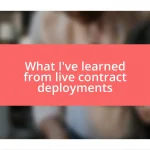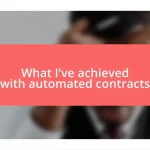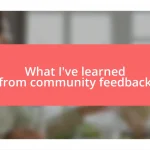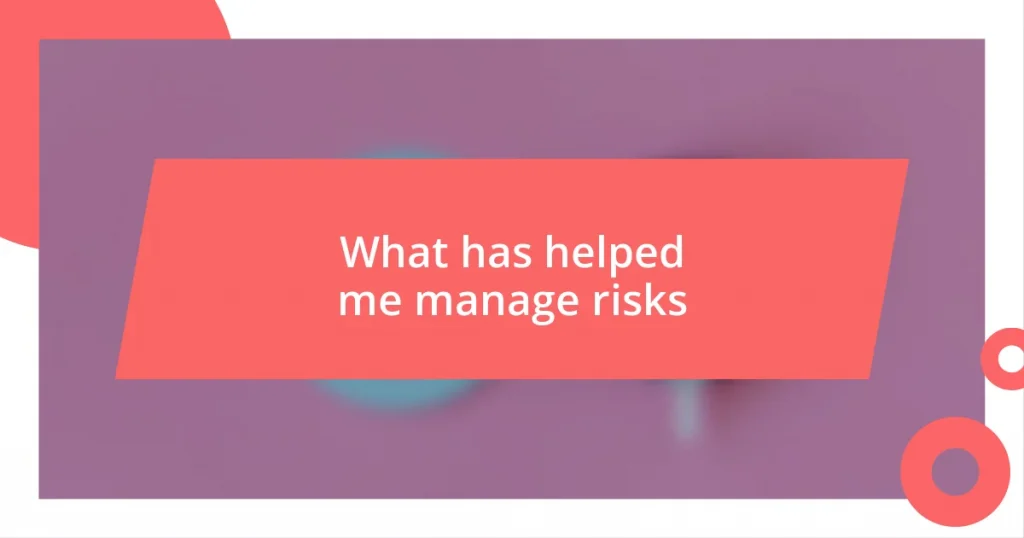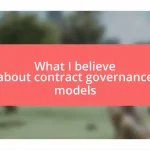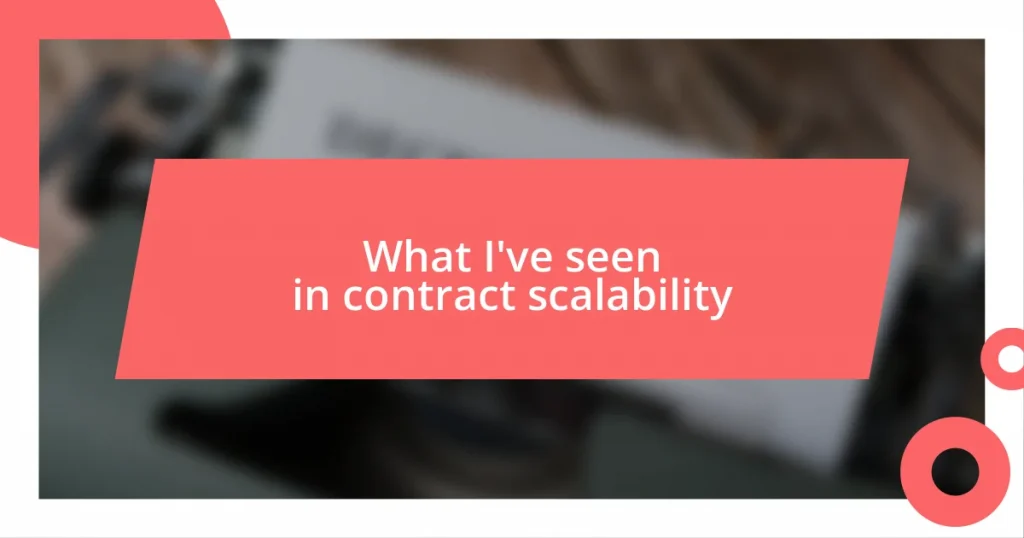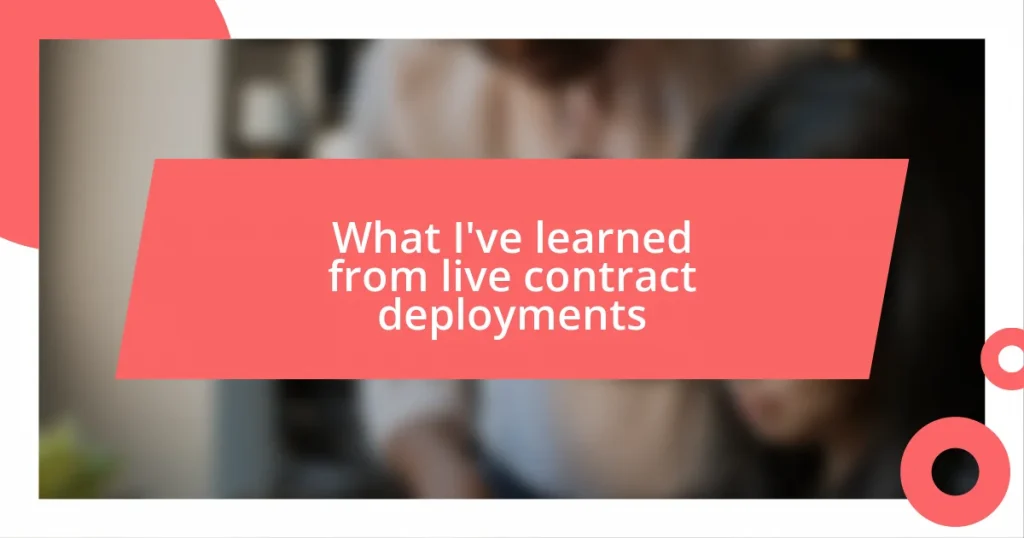Key takeaways:
- Effective risk management involves identifying potential challenges early and analyzing their emotional and financial impacts to make informed decisions.
- Developing a collaborative risk management plan with team input enhances vigilance and ownership, leading to better resource allocation and problem-solving.
- Continuous monitoring, reviewing risks, and learning from past experiences cultivate a culture of adaptability and proactive engagement within teams.
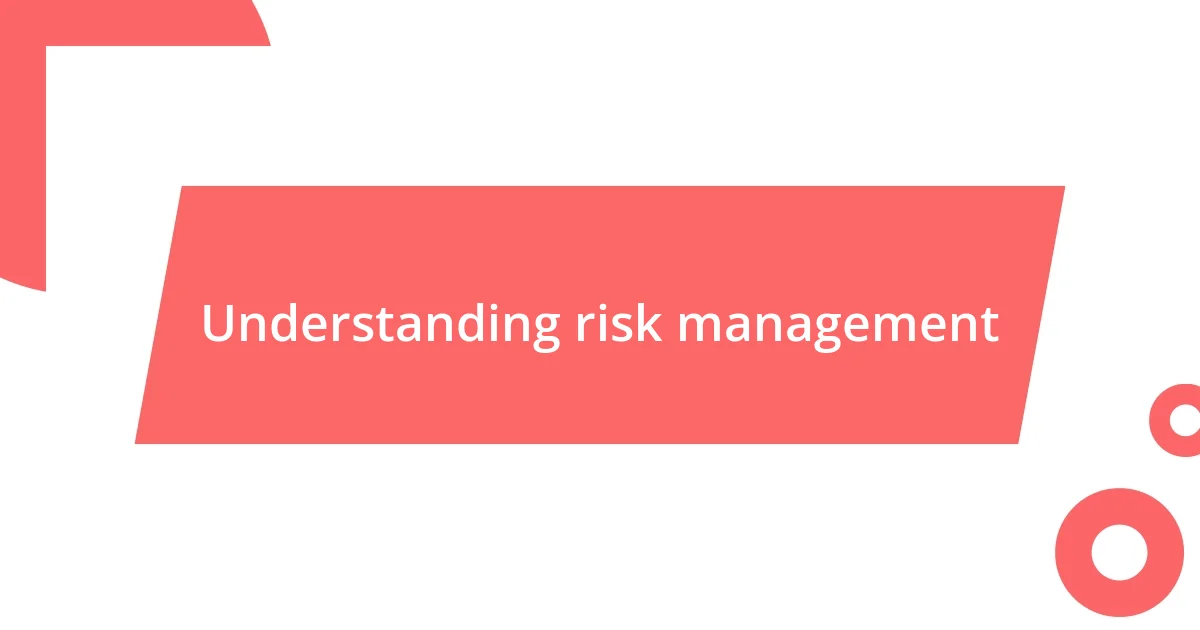
Understanding risk management
Understanding risk management is like navigating through life with a map. I remember the first time I encountered significant risk in my career; it was overwhelming. Assessing the potential for both loss and gain taught me that it’s not just about avoiding pitfalls but also embracing opportunities.
When I think about risk management, I often reflect on the emotional rollercoaster that comes with it. Have you ever felt that knot in your stomach when making a big decision? That’s the fear of the unknown. Yet, I’ve learned that analyzing risks can transform that fear into a strategic plan. By identifying potential hurdles ahead of time, I’ve been able to approach challenges with confidence rather than anxiety.
There’s a certain empowerment that comes from understanding the dynamics of risk management. It’s not merely about creating safety nets, but about making informed choices that can lead to growth. For instance, when I decided to invest in a new project, I meticulously evaluated the potential risks involved. This process didn’t just calm my nerves; it clarified my vision, enabling me to move forward with purpose.
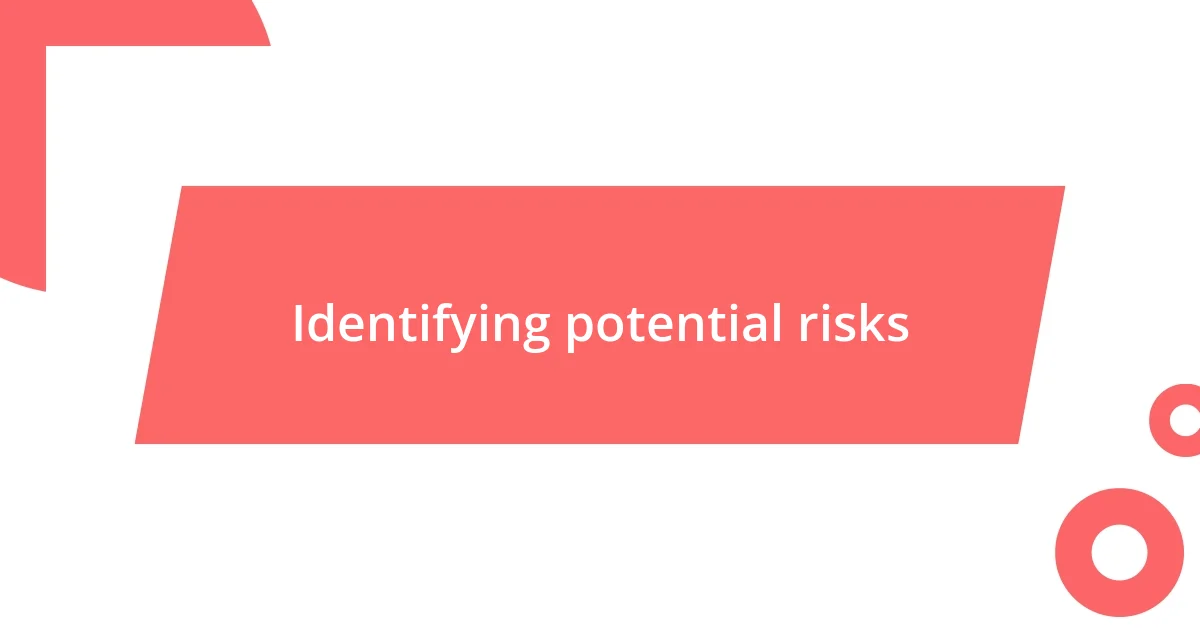
Identifying potential risks
Identifying potential risks has become a critical skill for me over the years. I remember a particular project where I overlooked the potential challenges of a tight deadline. It wasn’t until I saw my colleagues experiencing burnout that I realized the importance of assessing not just the project requirements but also the capacity of the team. Recognizing these risks early on could have led to better resource allocation and a healthier work environment.
In my experience, I’ve found that a proactive approach to risk identification makes a significant difference. I often use brainstorming sessions with my team to pinpoint potential risks, and it’s fascinating how diverse perspectives can uncover blind spots. For instance, during a recent product launch, we discovered potential market shifts that could impact our target audience. This insight allowed us to pivot our strategy, ensuring that we were prepared, rather than caught off guard.
A visual representation of risks can be quite helpful. I sometimes create risk matrices to categorize potential risks by likelihood and impact. The clarity this brings is invaluable. It transforms abstract fears into actionable strategies. In one case, mapping out risks helped me see that the financial implications of an unexpected supply chain issue were more severe than I had initially understood. By identifying the risk, I was able to develop contingency plans that made our project resilient.
| Risk Type | Impact Level |
|---|---|
| Financial | High |
| Operational | Medium |
| Market | Variable |
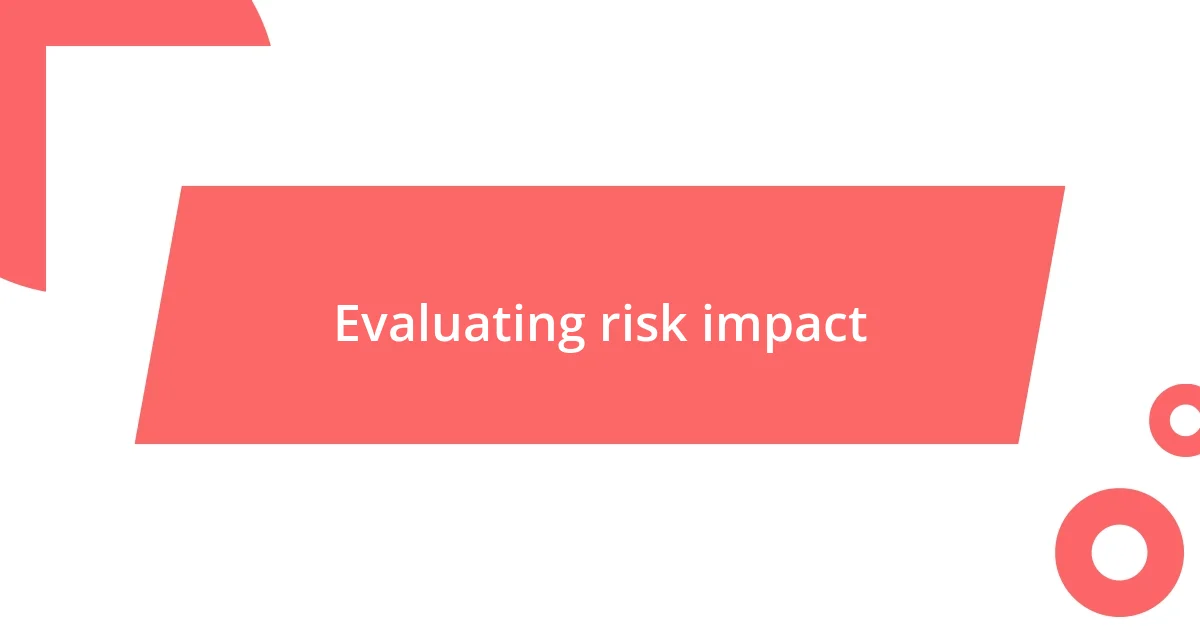
Evaluating risk impact
Evaluating the impact of risks is a pivotal step in my decision-making process. I distinctly recall a partnership that, at first glance, appeared promising. However, a deeper dive revealed potential financial repercussions I hadn’t anticipated. The realization hit hard—understanding not just the risk but its potential magnitude is critical. I learned to assess risks based on both probability and impact, which better prepared me for the unexpected twists that life and business can throw my way.
Here’s a quick breakdown of how I evaluate risk impact:
- Financial Consequences: What kind of monetary loss could I face?
- Operational Disruption: How would this risk affect day-to-day operations?
- Reputation Risk: Could this harm the trust others place in me or my business?
- Emotional Toll: What stress or anxiety might it bring, not just to me but my team?
- Long-term Effects: How might this shape future opportunities or relationships?
By reflecting on these categories, I’ve found that I can navigate risks with a sharper focus and a clearer strategy.
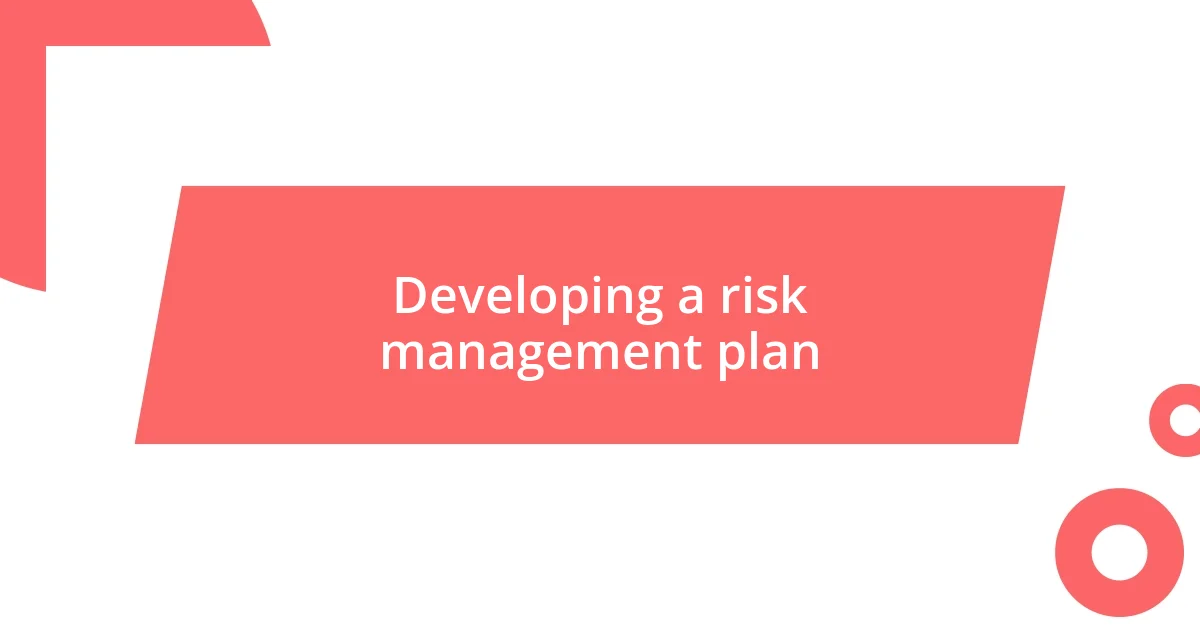
Developing a risk management plan
When it comes to developing a risk management plan, I’ve learned that clarity is key. Early in my career, I often jumped straight into action without a solid plan. I recall a stressful project that led to chaos because I hadn’t outlined clear steps for addressing risks. Now, I prioritize setting concrete objectives and defining what success looks like for each phase of my project. This structure has not only boosted my confidence but has also helped my team work cohesively toward a shared goal.
I find it immensely beneficial to include my team in crafting the risk management plan. Their insights often shed light on potential pitfalls I might not consider. For example, during a recent project, our graphic designer brought up concerns about the sourcing of sustainable materials. Her perspective was something I hadn’t fully grasped initially, but it prompted us to discuss alternative strategies that aligned with our values. Going through this collaborative effort fosters a sense of ownership and vigilance; we all become proactive in spotting and mitigating risks.
Moreover, I’ve discovered that continuously revisiting the risk management plan is paramount. I typically review the plan after crucial milestones or significant changes in a project. This practice prevents complacency and allows me to adapt to new risks as they arise. It’s fascinating how often I find myself reflecting on the unpredictability of a project. I remember once facing a sudden market influx that required a fast pivot in our approach. Thanks to an adaptable risk management plan, we navigated the situation more effectively than I initially thought possible. It’s a reminder that flexibility is just as crucial as preparation in risk management.
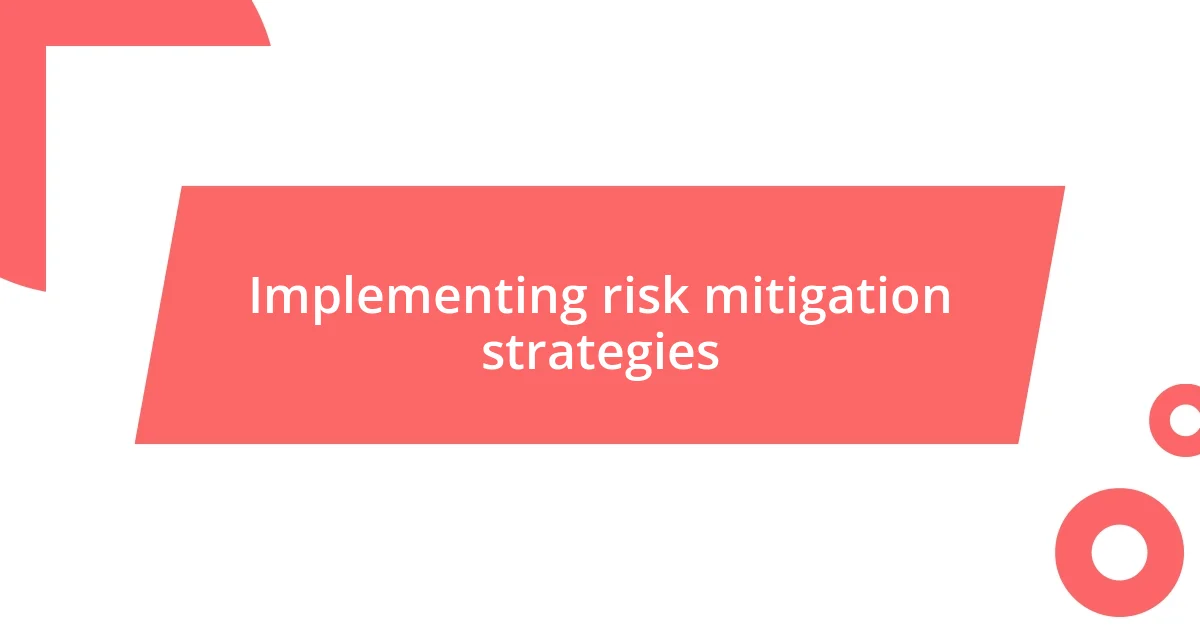
Implementing risk mitigation strategies
Taking action on risk mitigation strategies has been transformative in my journey. One memorable moment was when I implemented a contingency plan for a project that quickly spiraled out of control due to unforeseen delays. I had the foresight to establish backup solutions, which not only kept the project on track but also alleviated the stress for my team and me. This experience taught me that, in the face of uncertainty, having a proactive approach can turn potential disasters into manageable situations.
I’ve also found that educating my team about potential risks empowers us all to contribute to mitigation efforts. During a project review, I noticed hesitation among team members to voice their concerns about looming deadlines. Realizing this, I initiated regular brainstorming sessions to discuss risks openly. One of my developers shared their apprehension about a software bug that could derail our timeline. Addressing this upfront allowed us to allocate resources efficiently and adjust our strategies well before things went awry. How empowering is it when everyone is on board, actively working to safeguard a project?
Furthermore, I emphasize the importance of monitoring and adapting my strategies as part of the risk mitigation process. I recall an instance where market conditions shifted dramatically, affecting our supply chain. By staying alert and modifying our approach promptly, we managed to maintain our production schedules without significant losses. Isn’t it incredible how staying attuned to changes can make all the difference? It’s a constant reminder to me that risk management is not a one-time task, but an ongoing commitment to vigilance and adaptability.

Monitoring and reviewing risks
Monitoring and reviewing risks is something I’ve grown to value immensely over time. I remember a project where we came across a potential issue with our lead time. Initially, I brushed it off, thinking it was just a minor hiccup. But after monitoring it closely, the situation escalated. This taught me that proactive oversight can save a lot of headaches. Now, I make it a point to regularly check in on our risk factors, ensuring nothing slips through the cracks.
Sometimes, I find myself conducting informal reviews with my team—almost like a quick catch-up over coffee. These discussions often reveal new perspectives and insights that I hadn’t considered. I vividly recall a brainstorming session where a team member proposed a new communication tool to better flag risks. Just being open to dialogue paved the way for quicker adjustments, significantly enhancing our workflow. Isn’t it remarkable how a simple conversation can illuminate potential threats?
In my experience, embracing a mindset of perpetual review is where the real magic happens. There was a time when I hesitated to revisit our risk status frequently, fearing it would take too much time away from execution. However, now I see it differently. Adding regular checkpoints not only helps me adapt to changing circumstances effectively but also instills a culture of vigilance in my team. What if, instead of fearing setbacks, we viewed them as opportunities to refine our processes? That shift in perspective has changed not just our approach to risks, but our overall project success rate.
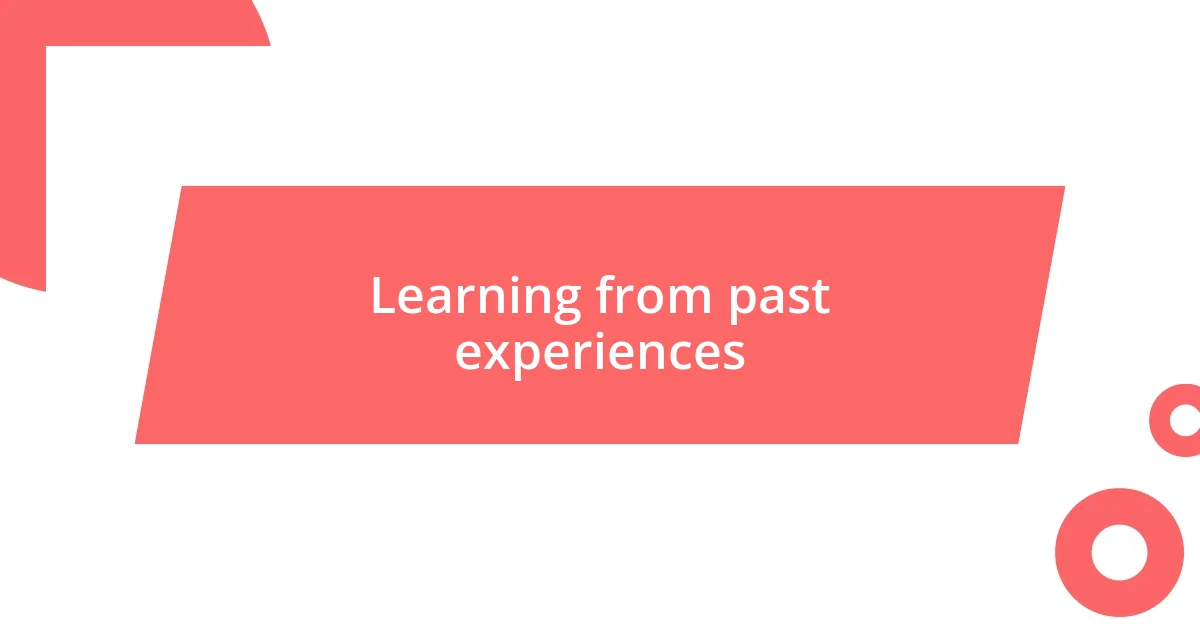
Learning from past experiences
Learning from past experiences has been a pivotal aspect of my growth in risk management. One time, I faced a challenging client project that went off the rails due to poor communication. I vividly remember how frustrated both my team and I felt — it was an eye-opening experience. This taught me the importance of establishing clear communication protocols early on. Now, whenever I kick off a project, I make it a priority to outline expectations and check in regularly. Isn’t it funny how a little clarity can prevent so much chaos?
Reflecting on previous challenges helps me recognize patterns that inform my future decisions. There was another project where we overlooked the significance of user feedback during the design phase. The product launch was underwhelming, and I felt the sting of disappointment. Since then, I’ve integrated regular feedback loops to adjust our approach. It’s incredible how learning from these bumps in the road has transformed not only the final outcomes but our overall process. Don’t you think learning should be a constant dialogue rather than a solo endeavor?
Moreover, I believe that sharing lessons learned builds a stronger collaborative environment. I often recount past pitfalls during team meetings, creating a safe space where everyone can voice their concerns. I remember one particular incident where sharing my failure to anticipate resource limits during a project allowed others to discuss their fears. This exchange fostered trust and unity within the team. Can you imagine the strength we gain from sharing our vulnerabilities? It’s this openness that paves the way for a proactive culture, inspiring us all to embrace risk management as part of our daily responsibilities.


